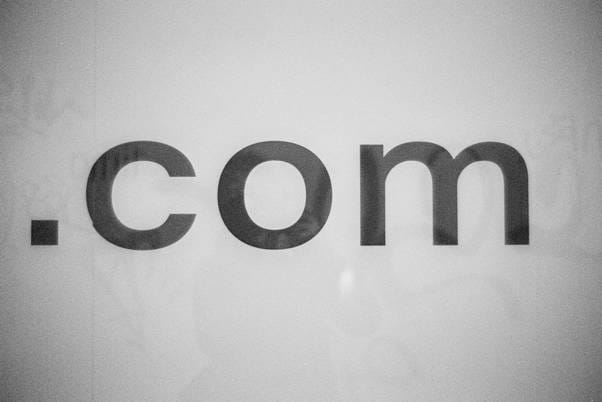
Do you need to establish your business or personal website but feel unsure about the initial steps?
Establishing your online presence requires domain registration as your fundamental initial action. The internet requires a domain name for your web presence since lacking one makes you like a homeless person online. But here’s the thing…
The process of registering a domain name proves difficult for beginners who lack basic understanding of the process.
This guide explains all essential details about domain registration using straightforward language.
Let’s dive in!
What you’ll discover:
- What Is a Domain Name and Why You Need One
- How to Choose the Perfect Domain Name
- Understanding Different Domain Extensions
- Where to Register Your Domain and What It Costs
- The Domain Registration Process Simplified
What Is a Domain Name and Why You Need One
The domain name functions as your website’s unique internet address. Your website’s address on the internet is input by users into their browsers when they search for your site.
Google.com, facebook.com, and amazon.com represent examples of domain names.
You should definitely get your own domain name to make your brand stand out.
- Your business or personal brand gains professionalism through your domain name.
- A domain name is more memorable for users than a numerical IP address such as 192.168.1.1
- Your audience and customers gain trust when you use your domain name.
- A domain name functions as a business asset which grows in value throughout its lifespan.
Your domain name represents a digital property. A properly chosen domain name may have monetary value that reaches into thousands or millions of dollars. When you buy a domain name, you’re actually purchasing the right to use it for a specific period, typically one year at a time.
Failing to secure your own domain name forces you to use a subdomain under someone else’s website (such as yourname.wordpress.com) which appears unprofessional and reduces your control.
How to Choose the Perfect Domain Name
Your choice of a domain name stands as one of the critical decisions you face when creating your online identity. Your domain name should be:
- Memorable – Easy to remember and type
- Relevant – Related to your business, brand, or purpose
- Short – Generally, shorter is better
- Simple – Avoid numbers, hyphens, and complicated spellings
This tested method will guide you to find the ideal domain name.
- Develop keyword ideas that represent your business objectives and website goals.
- Check availability of your top choices
- Look for different versions when your initial choices are unavailable
- Practice saying it aloud to test it verbally.
- Get feedback from others before finalizing
Your domain name can differ from the official name of your business. A domain that includes variations or keywords could deliver better SEO results.
Understanding Different Domain Extensions
Domain extensions or Top-Level Domains (TLDs) represent suffixes within domain names such as .com, .org, and .net.
These are the primary types of domain extensions you need to understand.
Generic TLDs (gTLDs)
- .com – The gold standard, best for commercial websites
- .net – Good for technical or network-based websites
- .org – Traditionally for non-profit organizations
- .info – For informational websites
Country Code TLDs (ccTLDs)
- .us (United States)
- .uk (United Kingdom)
- .ca (Canada)
So which one should you choose? If available, select the .com version for your domain name. In case the .com domain name is taken you should look into using .net or .org instead. You should choose country-specific domains only when your website targets visitors from a particular country.
Where to Register Your Domain and What It Costs
You can begin the registration process of your domain name after selecting your ideal one. A multitude of domain registrars exists on the market yet they differ significantly in their features and services.
Standard domains generally cost between $10 and $20 per year to register. Premium domain names may require payment of hundreds or thousands of dollars.
The following features indicate a good domain registrar.
- Transparent pricing with no hidden fees
- Free WHOIS privacy protection
- Easy-to-use dashboard for managing your domains
- You should receive excellent customer support assistance whenever you encounter any problems.
- Automated renewal options to ensure your domain remains active without accidental loss
Research prices at a minimum of 2-3 domain registrars before making your final choice since price differences exist. Renewal rates tend to exceed your initial registration fee so keep this in mind.
The Domain Registration Process Simplified
Ready to register your domain? Here’s the step-by-step process:
- Go to your chosen domain registrar’s website
- Enter your preferred domain name to see if it is available
- Select the domain extension (.com, .net, etc.) you want
- Choose your registration period (1-10 years)
- Add privacy protection if it’s not included
- Complete your purchase with payment info
- You must confirm your email address because ICANN regulations demand it.
- Enable auto-renewal to ensure you retain ownership of your domain.
Completing the entire domain registration procedure normally requires less than 10 minutes. Your domain becomes fully yours to utilize after completion of all steps.
Upon completing registration you will receive access to your domain’s DNS settings which are necessary to connect your domain to your website hosting service.
Domain Management Essentials
After you register your domain you must understand proper management techniques. Here are the essential management tasks:
1. Domain Privacy Protection
WHOIS privacy protection hides your personal details from public view. Without domain privacy protection people are able to discover who owns a domain through a WHOIS search and access your personal information.
2. Auto-Renewal
Activate your domain’s auto-renewal feature to avoid unintentional expiration. After your domain expires someone else may be able to register it and you could lose ownership permanently.
3. DNS Management
The DNS settings for your domain determine both your website hosting location and email management functionalities. Basic settings include:
- A Records establish the connection between your domain name and your hosting server.
- CNAME Records enable the creation of domain aliases such as “www”.
- MX Records establish the destination mail server for your email traffic.
Common Domain Registration Mistakes to Avoid
There have been many identical registration mistakes made which can be avoided:
1. Choosing a Hard-to-Remember Domain
When people struggle to recall or spell your domain correctly they will have difficulty finding your website. Choose simple domain names by avoiding unique spellings and numbers, hyphenation, and lengthier domain names.
2. Not Protecting Your Privacy
You expose your personal details to spammers and scammers along with any interested parties when you forego WHOIS privacy protection.
3. Registering Through Your Web Designer
Numerous web designers provide the service of domain registration for their clients. Domain registration through your web designer provides ease but becomes problematic when your partnership dissolves or the designer shuts down.
4. Forgetting to Renew
The expiration of domain registrations stands as one of the most prevalent and harmful errors. Enable auto-renewal for your domain and make sure your payment details are up to date.
Wrapping it all up
Registering a domain name marks the beginning of your journey to build an online presence. This article presents guidelines that will help you select the ideal domain name for your website.
Your domain name represents an investment in the digital identity of your brand. Investing time in selecting the right domain name pays off in the long run.
The value of having a personal domain has become increasingly significant.





